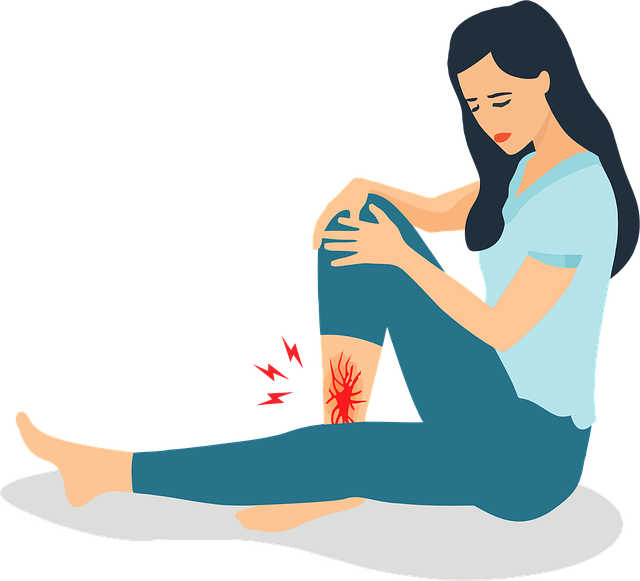Stem Cells vs Traditional Arthritis Treatments: Cost, Efficacy, and Future

Knee arthritis stem cell therapy offers a revolutionary approach, aiming to regenerate damaged carti…….
Arthritis, a debilitating joint condition characterized by pain, inflammation, and stiffness, affects millions of people worldwide. Traditional treatments often involve medications and surgical interventions, but they may not provide long-lasting relief for all patients. Here, stem cell therapy emerges as a promising alternative, offering a potential breakthrough in arthritis management. This comprehensive article delves into the world of stem cell therapy for arthritis, exploring its science, global impact, economic implications, technological innovations, regulatory landscape, and its path forward. By understanding this therapeutic approach, we can appreciate its transformative potential and the journey towards improved patient outcomes.
Definition: Stem cell therapy is a cutting-edge medical procedure that utilizes stem cells—undifferentiated cells with the capacity to develop into various specialized cell types—to treat diseases and repair damaged tissues. In the context of arthritis, this therapy involves injecting stem cells directly into the affected joints to stimulate regeneration and reduce inflammation.
Core Components:
Stem Cell Isolation: Different types of stem cells can be harvested from various sources, including bone marrow, adipose tissue (fat), and umbilical cord blood. Each source has its advantages and is chosen based on the patient’s needs.
Cell Expansion and Differentiation: After isolation, these stem cells are cultured in a laboratory setting to multiply their numbers and differentiate into specific types required for joint repair, such as chondrocytes (for cartilage regeneration) or synoviocytes (for synovial membrane health).
Injection and Therapy: The differentiated cells are then carefully injected into the patient’s arthritic joint(s). This procedure aims to restore joint function, alleviate pain, and improve mobility.
Historical Context: The concept of using stem cells for therapeutic purposes dates back to the 1960s, but their application in arthritis is a more recent development. Early experiments focused on bone marrow transplantation, which laid the foundation for understanding stem cell potential. Over time, advancements in cell culture techniques and a deeper understanding of joint biology have refined stem cell therapy for arthritis.
Significance: Stem cell therapy offers a potentially curative approach to arthritis by addressing the underlying cellular mechanisms of disease. Unlike conventional treatments that manage symptoms, this therapy aims to regenerate healthy tissue, providing long-lasting relief and improving patients’ quality of life.
Stem cell therapy for arthritis has garnered significant interest worldwide, leading to diverse trends across regions:
| Region | Trends | Notable Developments |
|---|---|---|
| North America | High adoption rate, with many clinical trials and successful case reports. | The US Food and Drug Administration (FDA) has approved stem cell therapies for knee osteoarthritis, setting a precedent for global regulations. |
| Europe | Growing acceptance, particularly in countries like Germany and the UK, known for their advanced medical research. | European researchers have made strides in optimizing stem cell differentiation for cartilage repair. |
| Asia | Rapid growth, driven by innovative research and patient-centric healthcare models. | South Korea and Japan are leading the way with advanced stem cell processing technologies and successful clinical outcomes. |
| Rest of the World | Increasing awareness and early adoption, with some countries implementing national guidelines. | Brazil and Australia have seen promising results in pilot studies, encouraging further research. |
The global market for stem cell therapy is expected to grow significantly due to rising healthcare expenditure, increasing arthritis prevalence, and improved regulatory support.
The economic landscape of stem cell therapy for arthritis is dynamic, with several key players shaping the industry:
Biotechnology Companies: These firms specialize in stem cell research, development, and manufacturing, investing heavily in clinical trials and product optimization.
Hospital Networks: Specialized clinics and hospitals offer stem cell therapies as part of their orthopedic services, attracting patients from around the world.
Research Institutions: Universities and medical centers contribute to groundbreaking discoveries, ensuring a steady pipeline of innovative treatments.
The industry has attracted substantial investment due to its potential:
Venture Capital: Private equity firms have funded early-stage startups, accelerating research and product development.
Government Grants: Public funding supports clinical trials and basic science research, fostering a robust innovation ecosystem.
Public Offerings: Some companies have successfully raised capital through initial public offerings (IPOs), signaling investor confidence.
Stem cell therapy has the potential to:
Reduce Healthcare Costs: By providing long-term relief and potentially reducing the need for surgeries, it could lower arthritis-related healthcare expenditures.
Enhance Quality of Life: Improved patient outcomes can lead to increased productivity and better overall well-being, contributing to economic prosperity.
Foster Medical Tourism: Countries with advanced stem cell therapy capabilities may attract international patients, boosting their economies.
Continuous technological innovations have revolutionized stem cell therapy:
Improved Cell Isolation Techniques: Advanced methods like flow cytometry and magnetic sorting ensure the purity of harvested stem cells, enhancing therapeutic efficacy.
3D Bioprinting: This technology allows for the creation of customized, patient-specific tissue constructs, offering a promising approach to regenerating complex joint structures.
Genetic Engineering: Modifying stem cells to express specific growth factors or genes can enhance their ability to repair damaged tissues.
Nanoparticle Delivery: Targeted drug delivery systems using nanoparticles can improve the efficacy of therapeutic agents and reduce side effects.
Regulatory bodies worldwide are crucial in ensuring patient safety and fostering responsible innovation:
US FDA: The FDA has established guidelines for stem cell clinical trials, including good manufacturing practices (GMP) for cell production. It has approved several stem cell therapies for knee osteoarthritis.
European Medicines Agency (EMA): The EMA provides regulatory oversight for stem cell products across Europe, collaborating with national authorities to facilitate clinical development.
National Health Authorities: Many countries have implemented their guidelines, often adapting international standards to local contexts.
The path to widespread adoption of stem cell therapy for arthritis involves continuous research, robust clinical data, and harmonized regulatory frameworks.
Despite its promise, stem cell therapy for arthritis faces challenges:
Standardization: The lack of standardized protocols for cell processing and administration can impact treatment outcomes.
Long-Term Safety: Long-term follow-up studies are essential to assess the safety and durability of stem cell therapies.
Access and Cost: Ensuring equitable access to these treatments and managing costs will be critical for widespread adoption.
Future research should focus on:
Stem cell therapy represents a significant advancement in the management of arthritis, offering hope for improved mobility and pain relief. As research continues, we can anticipate further breakthroughs, leading to more effective and accessible treatments. The global collaboration between researchers, healthcare providers, and regulatory bodies is essential to unlock stem cell therapy’s full potential, ultimately benefiting patients worldwide.

Knee arthritis stem cell therapy offers a revolutionary approach, aiming to regenerate damaged carti…….

Stem cell therapy for arthritis offers a non-surgical, conservative approach leveraging stem cells&#…….

Arthritis, a common joint condition, causes pain and reduced mobility. Traditional treatments manage…….

Mesenchymal stem cells (MSCs) offer a promising knee arthritis treatment due to their regenerative c…….

Chronic arthritis pain impacts daily life and leads to tissue deterioration. Stem cells offer a revo…….

Osteoarthritis (OA) patients have a new hope in stem cell therapy, which targets inflammation and re…….

Stem cell injections for arthritis offer a promising alternative to conventional treatments, targeti…….

Hip arthritis sufferers find hope in stem cell therapy for arthritis, which regenerates cartilage, a…….

Stem cell injections offer a promising regenerative therapy for arthritis, stimulating natural repai…….

Cartilage and tissue regeneration is crucial for managing arthritis pain, as degradation leads to si…….